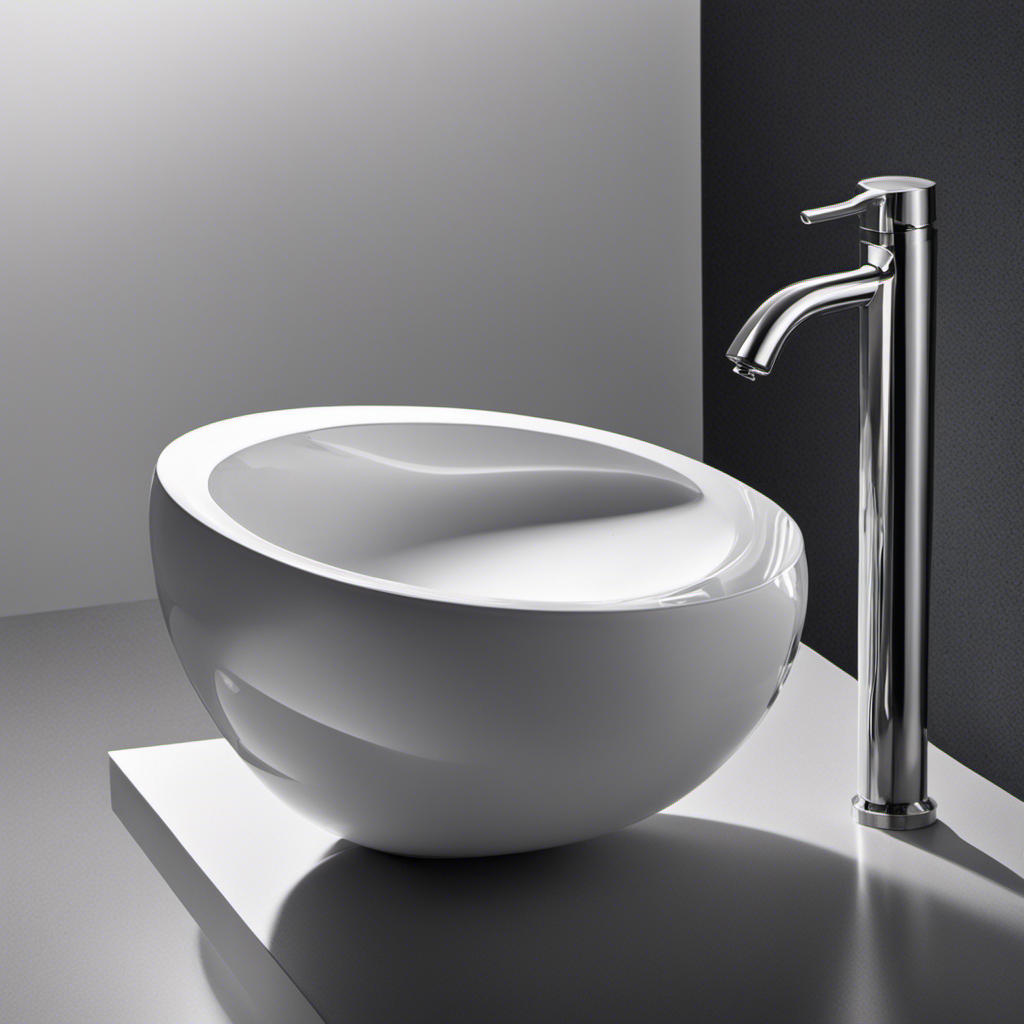Ever wondered why my legs go completely numb every time I sit on the toilet? It’s like they’ve fallen asleep and I have to awkwardly stumble around when I finally stand up.
Well, let me tell you, there’s a scientific reason behind this bizarre phenomenon. In this article, we’ll dive into the anatomy of numbness, explore the pressure points that can cause it, and unravel the connection between pinched nerves and leg numbness.
So, get ready to uncover the truth about why our legs betray us on the porcelain throne.
Key Takeaways
- Leg numbness on the toilet can be caused by compression or pressure on the nerves.
- The design of the toilet seat can contribute to leg numbness by exerting pressure on specific leg areas.
- Techniques such as adjusting sitting position, using a cushion, and taking breaks can alleviate nerve compression and prevent leg numbness.
- Promoting healthy blood flow and circulation is important in preventing leg numbness on the toilet, including avoiding prolonged sitting, taking breaks to stretch, and using a cushion for leg support.
The Anatomy of Numbness: Understanding the Physiology Behind Leg Numbness
Leg numbness occurs when there’s compression or pressure on the nerves, leading to a temporary loss of sensation. This happens because the nerves responsible for transmitting signals from our legs to our brain, known as nerve conduction, are affected.
Our sensory perception, which allows us to feel touch, temperature, and pain, relies on these nerves. When they are compressed or under pressure, they are unable to transmit signals properly, resulting in numbness.
This can occur due to various reasons such as sitting or lying in a position that puts pressure on the nerves, wearing tight clothing that restricts blood flow, or even certain medical conditions like sciatica or herniated discs.
Understanding the anatomy behind leg numbness helps us identify the underlying causes and seek appropriate treatments.
Pressure Points: How Sitting on the Toilet Can Cause Numbness in Your Legs
Sitting on the toilet can cause numbness in your lower extremities due to pressure points. The design of the toilet seat plays a crucial role in determining the amount of pressure exerted on your legs. If the seat is too hard or lacks proper padding, it can increase the pressure on specific areas of your legs, leading to reduced blood flow and nerve compression.
To prevent leg numbness, it is important to choose a toilet seat that provides adequate cushioning and support. Look for seats with ergonomic designs or additional padding to distribute your weight evenly and alleviate pressure points. By selecting the right toilet seat design, you can minimize the risk of leg numbness and ensure a more comfortable bathroom experience.
Now, let’s explore the link between numbness and pinched nerves on the toilet.
Nerve Compression: Exploring the Link Between Numbness and Pinched Nerves on the Toilet
To alleviate the discomfort caused by nerve compression on the toilet, you can try adjusting your sitting position or using a cushion for additional support. Pinched nerves occur when there is excessive pressure or compression on a nerve, leading to numbness, tingling, or pain. When sitting on the toilet for an extended period, certain positions can put pressure on the nerves in your legs, causing them to go numb.
Here are some tips to help alleviate this issue:
- Adjust your sitting position by leaning slightly forward or sitting upright.
- Use a cushion or pillow to provide extra padding and support.
- Take breaks and stand up periodically to relieve pressure on your nerves.
- Engage in regular exercise to strengthen the muscles around your hips and thighs, reducing the likelihood of nerve compression.
- Maintain a healthy weight to minimize the strain on your nerves.
Blood Flow Matters: How Poor Circulation Can Lead to Numbness on the Toilet
To alleviate the discomfort caused by poor circulation on the toilet, try adjusting your position or using a cushion for support. Poor circulation can have consequences beyond just leg numbness on the toilet.
When blood flow is restricted, it can lead to pain, tingling, and even more serious health issues. When we sit for extended periods, especially on hard surfaces, it puts pressure on our blood vessels, reducing blood flow to our legs. This can result in numbness and discomfort.
To prevent leg numbness on the toilet, it is important to promote healthy blood circulation. Avoid sitting for too long, take breaks to stretch and move around, and consider using a cushion or pillow to support your legs and improve blood flow.
Sitting Posture: The Role of Incorrect Positioning in Leg Numbness on the Toilet
When you sit in an incorrect position, it can contribute to the discomfort and numbness you may experience in your legs while using the toilet. Proper sitting posture is essential to maintain healthy blood flow and prevent muscle tightness.
Here are a few tips to improve your sitting position:
- Keep your feet flat on the floor or use a footrest to support them.
- Maintain a 90-degree angle at your hips and knees.
- Avoid crossing your legs, as it can restrict blood flow.
- Sit with your back straight and supported by the backrest.
- Take breaks and stretch periodically to relieve muscle tension.
Incorrect sitting positions can lead to muscle tightness, which can compress blood vessels and nerves, causing numbness in the legs. By practicing proper sitting posture, you can minimize discomfort and improve blood circulation, reducing the likelihood of leg numbness while using the toilet.
Frequently Asked Questions
How Long Does Leg Numbness on the Toilet Typically Last?
Leg numbness on the toilet typically lasts for a few minutes. It’s caused by prolonged pressure on the nerves and blood vessels. To relieve it, try shifting your position or standing up briefly.
Can Leg Numbness on the Toilet Be a Sign of a More Serious Medical Condition?
Yes, leg numbness on the toilet can potentially indicate a more serious medical condition. It may be related to nerve compression due to poor posture or prolonged pressure on the nerves.
Are There Any Exercises or Stretches That Can Help Prevent Leg Numbness on the Toilet?
Exercises, stretches, and alternative seating options can help prevent leg numbness on the toilet. By improving posture and increasing blood flow, you can find relief. One study found that regular movement reduced toilet-related numbness by 60%.
Is There a Specific Age Group That Is More Prone to Experiencing Leg Numbness on the Toilet?
There isn’t a specific age group more prone to leg numbness on the toilet. It can happen to anyone due to prolonged pressure on the nerves and blood vessels. Stretching or changing positions may help.
Can Using a Cushion or Padded Seat on the Toilet Prevent Leg Numbness?
Using a cushion or padded seat on the toilet can help prevent leg numbness. The added cushioning provides support and reduces pressure on the legs, improving circulation and reducing the likelihood of numbness.
Conclusion
Well, who would have thought that a simple trip to the toilet could leave you with numb legs?
It turns out that the anatomy of numbness, pressure points, nerve compression, blood flow, and sitting posture all play a role in this peculiar phenomenon.
So, next time you find yourself wondering why your legs go numb on the toilet, just remember that even the most mundane activities can have unexpected consequences.
Who knew that sitting on the porcelain throne could provide such an enlightening experience?










